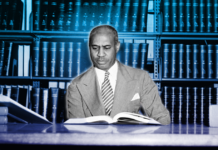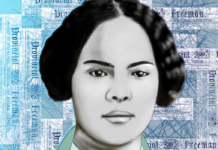Invisible. That’s how some teachers make students feel. I thought about this after a recent episode of This is Us. The show follows the lives of Jack and Rebecca Pearson’s children who all have the same birthdate. Randall, a black boy, was born on the same day as Jack and Rebecca’s kids, Kate and Kevin, but was abandoned. The Pearsons, who are white, decided to adopt Randall. Fast forward to years later, young Randall struggled to figure out who he is in the world as a black male, and this dialogue happened between him and his dad during last week’s episode.
Jack: I don’t look at you and see color; I see my son.
Randall: Then you don’t see me, Dad.
Eighty percent of teachers in America are white. This means my black sons could go through their entire education and never have a black teacher or any teacher of color. On July 13, 2019, Nicholas Ferroni tweeted, “SOCIAL EXPERIMENT: If you come across this tweet, reply with the grade you were in when you had your first nonwhite teacher.” One respondent replied, “Sadly I have had only white teachers.” This is a sad reality especially as schools are not 80% white and are becoming increasingly more diverse. White teachers have to do more than show up to teach. They need to see their students for who they are.
Recently, there has been a push to ensure teachers are culturally responsive. School districts like Indianapolis Public Schools are investing in Racial Equity training. These trainings are important and needed, but white teachers have to do more than compliantly sit through the sessions. They have to reflect, challenge their beliefs, and make changes. When white teachers don’t, they harm children of color and their families. Every time I have sat in one of these workshops, there is always a white teacher who says what Jack said to Randall, “I don’t see color.” Furthermore, those individuals typically questioned why they are there and even expressed feeling attacked. This situation has played out in the media in New York as some educators have expressed disdain for the implicit bias training.
Students of color are continually lagging behind white students. Schools have to take action to address this concern. Taking action does not help if teachers are only going through the motions. As a parent, I had to explain to my son when he was in kindergarten how Dr. King was not colorblind. I thought he misheard his white teacher. After following up with the teacher, I realized he had not. When teachers do not see color, they do not see my black sons. They don’t see my black family, and they will continue to not understand the needs of my children because they are too busy trying to teach everyone the same.
If you are a white teacher, I challenge you to examine your beliefs. Do you see all of the children who sit in front of you each morning? Do you take district professional development that addresses cultural responsiveness, implicit bias, and racial equity seriously? Are you willing to do the internal work that is necessary to see all of your students? If you answered no to any of these questions, I need you to work on moving from no to yes or exit the profession. If my black sons go through K-12 and only have white teachers, I want each teacher to see them for who they are. I shouldn’t have to settle for less.
This post originally ran on the Indy K12 Education Blog:









